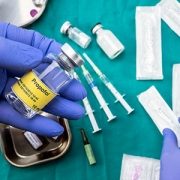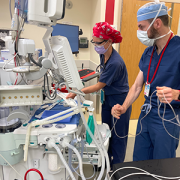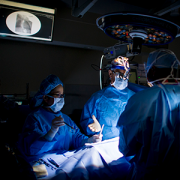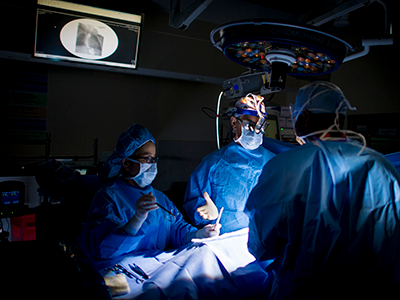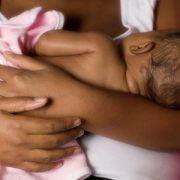
Briony Varda, M.D., M.P.H., is fellowship trained in pediatric genitourinary reconstructive surgery and her subspecialty interests include the care of patients with spina bifida and the neurogenic bladder, cloacal anomalies, hydronephrosis, vesicoureteral reflux and posterior urethral valves, among others.
Children’s National Hospital recognizes many urologic disorders and illnesses that are unique to children. As such, we pride ourselves in working with top urology experts, including Briony Varda, M.D., M.P.H., pediatric urologist, who recently joined the Urology Division at Children’s National.
Dr. Varda is fellowship trained in pediatric genitourinary reconstructive surgery and her subspecialty interests include the care of patients with spina bifida and the neurogenic bladder, cloacal anomalies, hydronephrosis, vesicoureteral reflux and posterior urethral valves, among others.
Here, Dr. Varda tells us more about her work and what it means for the future of pediatric urology patients at Children’s National.
Q: Why did you decide to work in this field?
I have always thoroughly enjoyed working with children. They keep you on your toes, tell it straight, make you laugh and demonstrate unique resilience. At the same time, surgery allows me to work with my hands, while being creative and helping others. Finally, I had great mentors within pediatric urology who strongly influenced me in a positive way.
In sum, the kids, the surgery and the people led me here.
Q: What is the importance of urology care?
We have three goals in pediatric urology: protect the kidneys and bladder, prevent infection and help our patients stay dry.
Although it’s usually clear when kids have urinary tract infections or trouble with urinary accidents, it’s not always visible when there is a problem with the kidney or bladder. Urologic care is therefore important because it prevents long-term damage that might otherwise go unnoticed until it is too late. This is particularly true for patients with abnormal functioning of the bladder related to a neurologic cause, such as spina bifida or a tethered spinal cord.
Q: How has the program expanded and what are some of the most valuable changes you hope to see in the next couple of years?
Our Spina Bifida Program currently includes physicians from physical medicine and rehabilitation (PMNR), orthopedics, neurosurgery and urology. Our newest additions include a full-time nurse practitioner who facilitates care coordination and has a clinical expertise in bowel management, two new urologists (myself and Christina Ho, M.D.), and Mi Ran Shin, M.D., who is our new PMNR physician.
We are also collaborating closely with the new Pediatric Colorectal & Pelvic Reconstruction Division for patients who need advanced bowel management. These additions will go a long way to helping improve the day-to-day living of our patients and help improve their long-term medical outcomes.
In the coming year, we are anticipating welcoming another full-time nurse to our program, offering more patient-facing resources including a webpage focused on urodynamics and an array of new patient education materials. We are also hoping to establish a regional transitional care network for our adolescent and young-adult patients.
Q: The Colorectal Program at Children’s National includes three urologists. How does this collaboration allow for the care of more complex cases at this hospital?
We are fortunate to be part of the Colorectal Program here at Children’s National Hospital. We provide subspecialty expertise for patients born with anorectal malformations, including cloacal anomalies and cloacal exstrophy. Although historically considered a general surgery problem, patients with anorectal malformations have a high rate of concomitant conditions affecting their genitourinary anatomy and function. By coordinating clinical care and surgery within a multidisciplinary team, we provide comprehensive care for even the most complex patients – nothing goes unnoticed and each subspecialist provides a unique perspective on management as it relates to their field. Along with ourselves and the colorectal surgeons, we regularly collaborate with gynecology, gastroenterology, interventional radiology and anesthesia.
Q: What is some of the research you’re working on now that you’re looking forward to the most?
We are currently designing a set of research projects aimed at investigating low-value healthcare utilization (for example, emergency room use and inappropriate testing) among patients with spina bifida. I plan to investigate institutional patterns and then expand out to the Washington, D.C., Maryland, Virginia area and the national setting. By identifying patterns in low-value healthcare utilization and their associated factors, we can ideally improve care delivery for this special healthcare needs population.
We are also working on institutional protocols to enact recently published guidelines by the Spina Bifida Association and the CDC so that we can eventually contribute our own data to national registries. This will pave the way for increasingly rigorous spina bifida research in the future.



